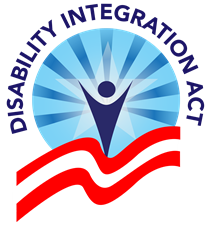Be sure to send out invitations to your event in advance and encourage people to request reasonable accommodations. This will allow those with cognitive and learning disabilities to let you know if they’ll need any communication access accommodations.
While cognitive and learning disabilities can manifest in many different ways, the following are some basic accommodations you can use as a starting point. However, it is important to be flexible based on individuals’ needs as accommodation requests come in.
When Choosing and Setting Up a Space:
- Minimal Distractions: blank walls, solid neutral flooring, single color table and tablecloths and chairs, have entrances behind event
- Minimize/Eliminate Background Noise: improve acoustics by covering walls with tapestries, paintings, baffles, or by placing furniture against it. Cover floors with carpeting or area rugs that are no or low pile. Make sure appliances and equipment are turned off, or are not loud enough to interfere with event. Do not use background music during mingling time and meals.
When Providing Written Materials:
- Use single color font on single color background
- Use high contrast colors like yellow and black, or white and black
- Avoid graphics, color, movement, radio buttons, drop down menus, and field lines if at all possible. If needed, put pictures, graphics, logos, etc on separate pages.
- Eliminate all formatting, use “white space” as the formatting and use uncluttered page display. Don’t try to cram everything on one page.
- Use clear, concise, language at 4th grade reading level vocabulary
When turning into electronic formats, use alt tags and fully describe them - When doing a slideshow, or webinar, provide a telephone line with audio description of the slides and all other materials.
- Presenters should make sure to read each line of each slide and fully describe all images during the presentation.
- Identify all speakers/presenters.
For Those Who Work Better In Pictures Than In Words:
- Provide materials with clear, concise pictures conveying main ideas
- Provide audio descriptions that match the pictures and that describe what is happening in the room during an event.

Comments are closed.